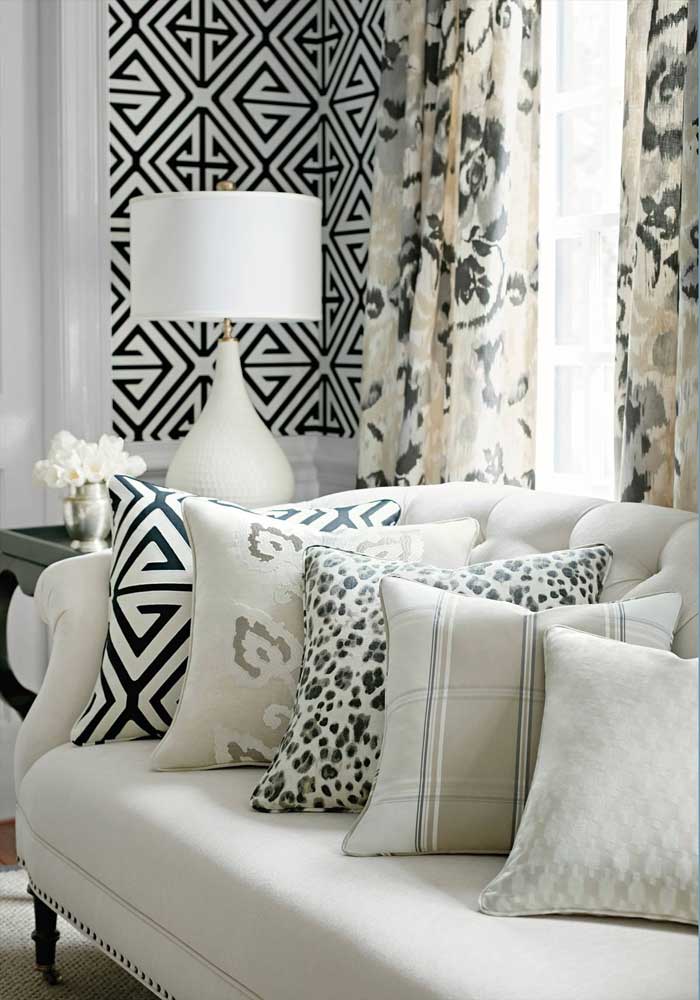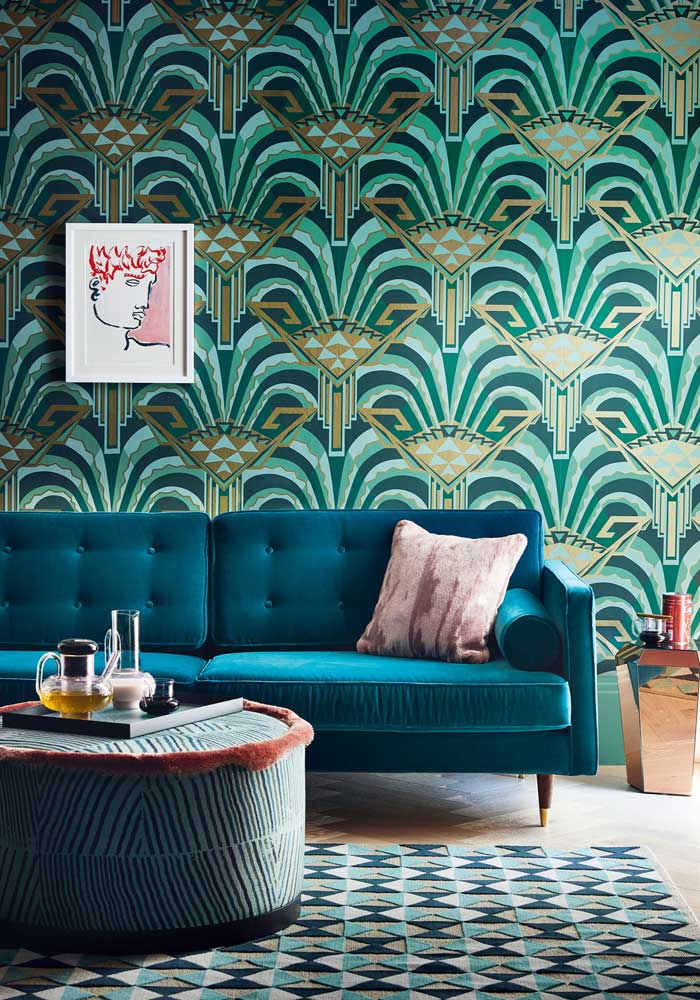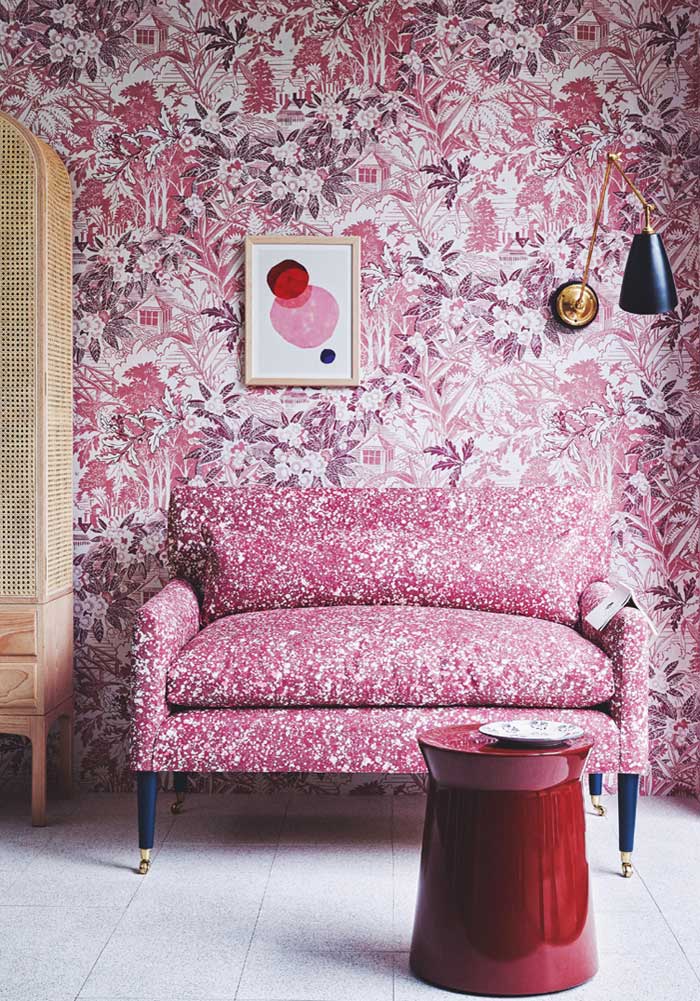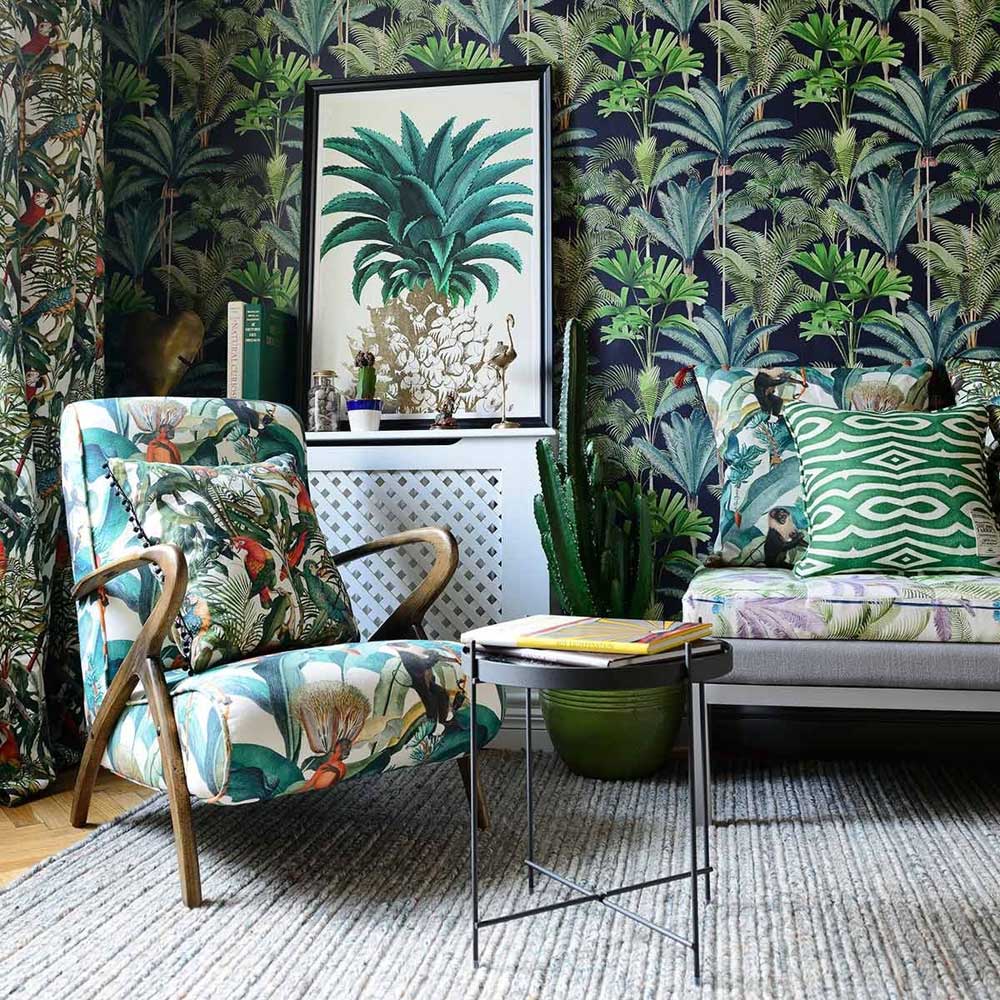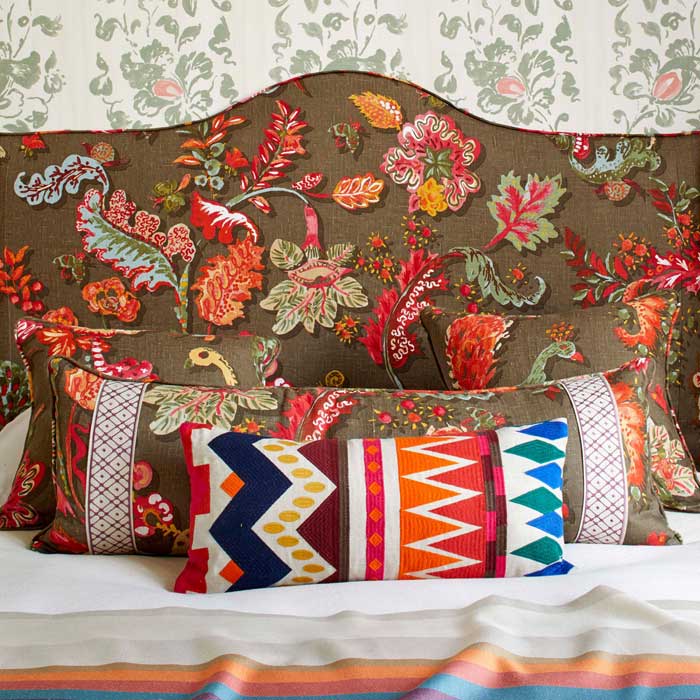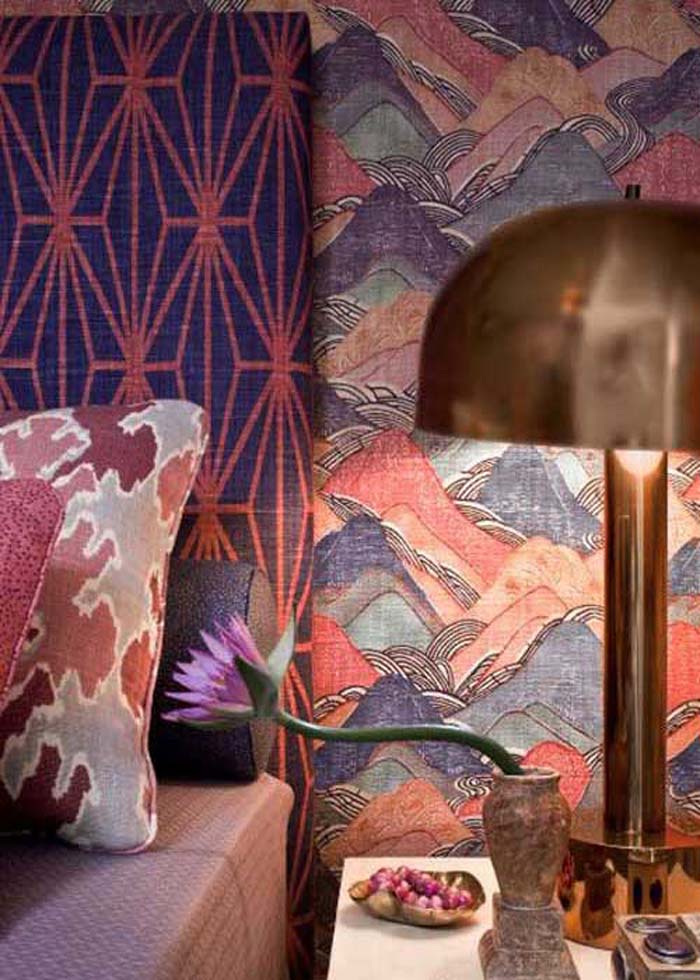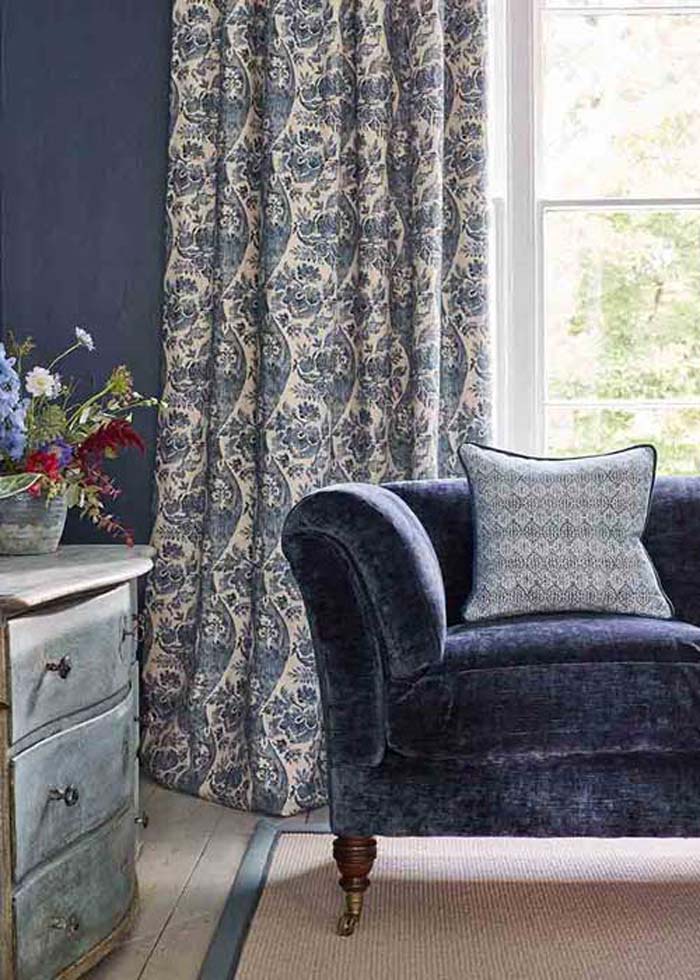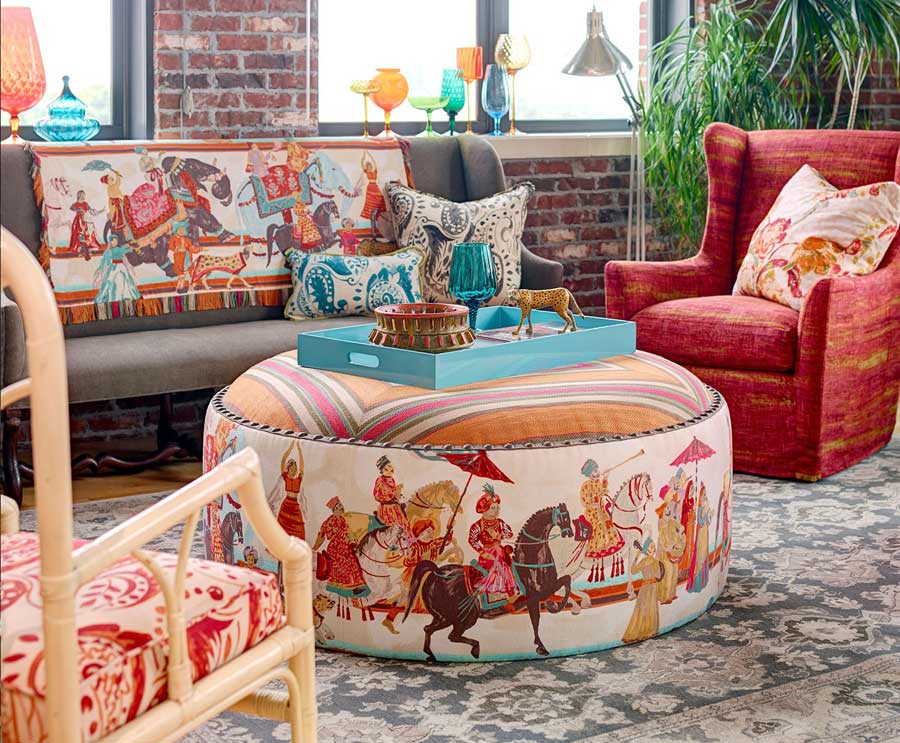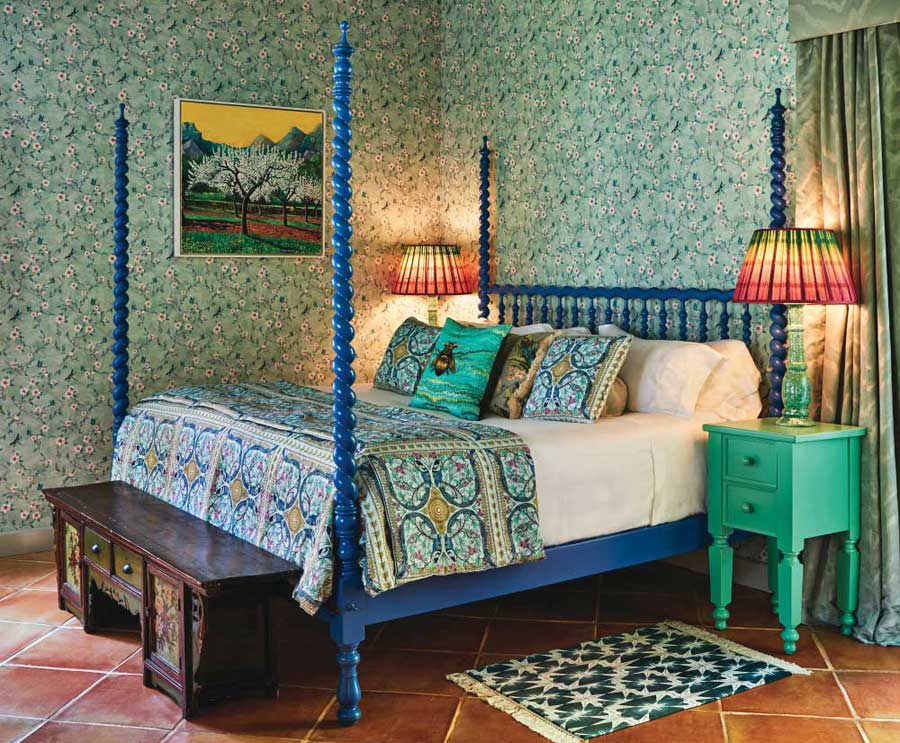Mixing pattern within an interior scheme creates dynamic spaces, filled with energy and textural interest that visitors will marvel at when entering your room. With designers like Kit Kemp showing us just how effective mixing designs can be, many of our readers tell us that it is an interior style that they aspire to achieve, but often don't know how to begin.
Between colours, scales and patterns, cushions, curtains and upholstery, there is a lot to consider and we understand that it can seem a little overwhelming at first. But there are some simple rules you can follow to guide you in selecting your fabrics and wallpapers so read on and let us help you conquer your pattern-mixing phobia...
Consider Your Palette
When starting any scheme one of the most important things to consider is the colour palette, and how your patterns are going to tie into the overall look. Your pattern-colour combination can greatly affect how the room feels so begin by thinking about the kind of mood you want to emulate.
Floral patterns and in summery shades will help to bring in light and warmth, while darker florals and leaf motifs have a more dramatic look that feels more intimate. More ordered patterns such as geometrics and stripes work well in colder shades such as blues and greys for a smart and mature look, while lighter and brighter design will give your room an more energetic and playful feel.
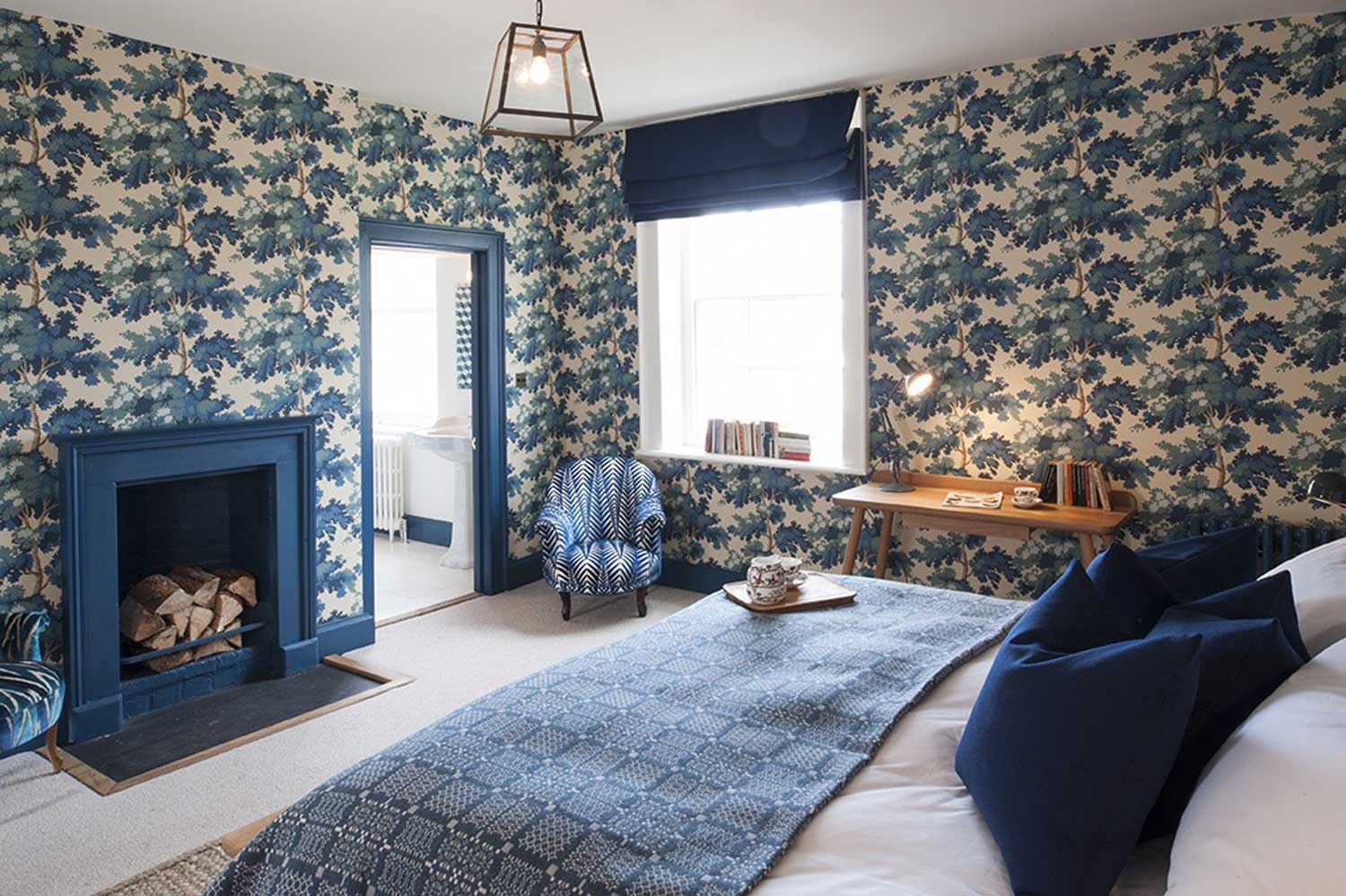

Take Stock of Your Patterns
Spend some time collecting together all the patterns you would like to see in your room, as well as ones that are already there. Wooden floorboards, exposed brickwork, fireplace detailing and wood grain all add to your pattern count, and unless you’re planning on starting with a clean slate, they must be taken into consideration when introducing new ones into the mix.
Edit, Edit, Edit
Next, you can begin the editing process. Place swatches side by side, move them around and experiment with the patterns you want at the front of the room and those you want in the background.
Sometimes you won't realise two patterns work until they are placed side by side, so it's important to take this time to explore what works. Leave your scheme and return to it as it can take time to get used to seeing two bold designs together. Also explore playing with your pieces at different times of day so that you can see how they look together in different lights.
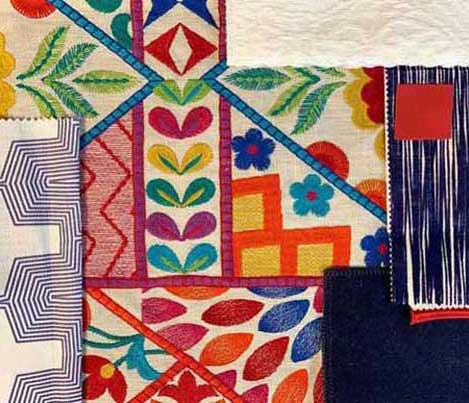

Put Your Favourite Colour Centre Stage
One way to guarantee you'll be proud of your pattern matching is by placing your favourite colour at the heart of your scheme. By varying the intensity of the shade across your products and using key pieces like cushions and curtains to inform colours that will complement your chosen tone, you will build a design that feels harmonious and well put together.
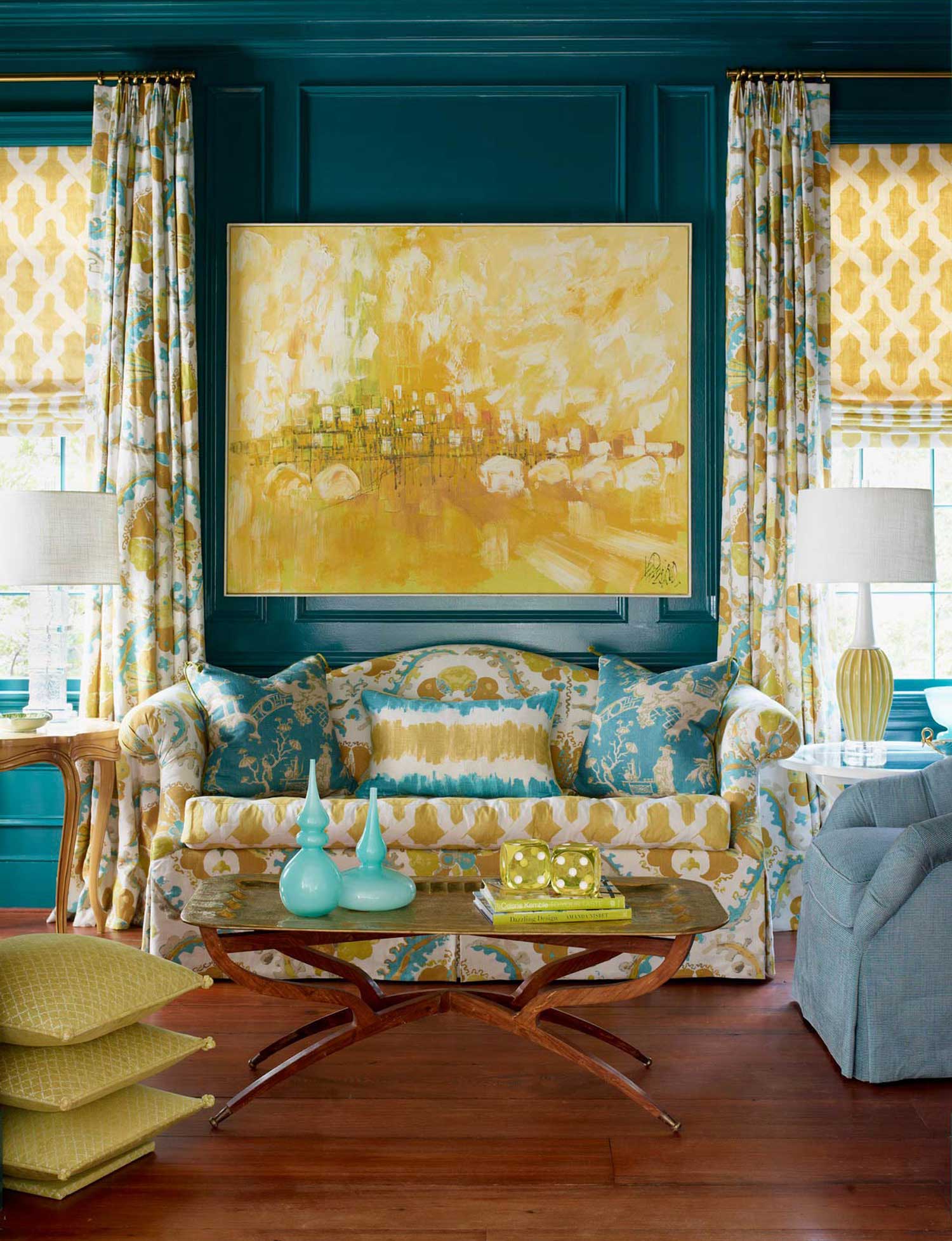

Combine Small, Medium and Large
Combining patterns with different scales will help to create balance across your interior. A good rule of thumb is to focus on one large-scale pattern, so that the focus of the room is clear. Next build smaller patterns into the room through cushions and rugs that sit in areas of space to fill in the gaps. It is also important to break up your patterns with neutral variations or blocks of colour to give the eye a rest.
Make Sure the Pattern Works for The Surface
Believe it or not, patterns side by side can sometimes look flat, so experiment with mixing things up! Combine weaves, prints and embroideries or add a shaggy rug, textured lampshade or some interesting trimmings.
Ensure the pattern suits the surface you’re going to put it on. A large scale print might look odd on a tiny cushion, while a small scale design can sometimes look washed out on a rug or grand set of curtains. Practice by laying your samples around the room on top of the areas that you propose to use them on. This will give you more of a perspective on how the patterns and scales will look when moving around the space.
Keep the Rest of The Room Simple
If you’re worried about your room becoming too cluttered or want to keep things feeling lightweight and fresh, start with plain painted walls to lift the room. Mix a small amount of patterns together across the space, using certain designs more than once on different pieces. This repetition will still inject that active feeling that patterns bring to a interior, but will also help to create a feeling of order which will stop it feeling overwhelmed.
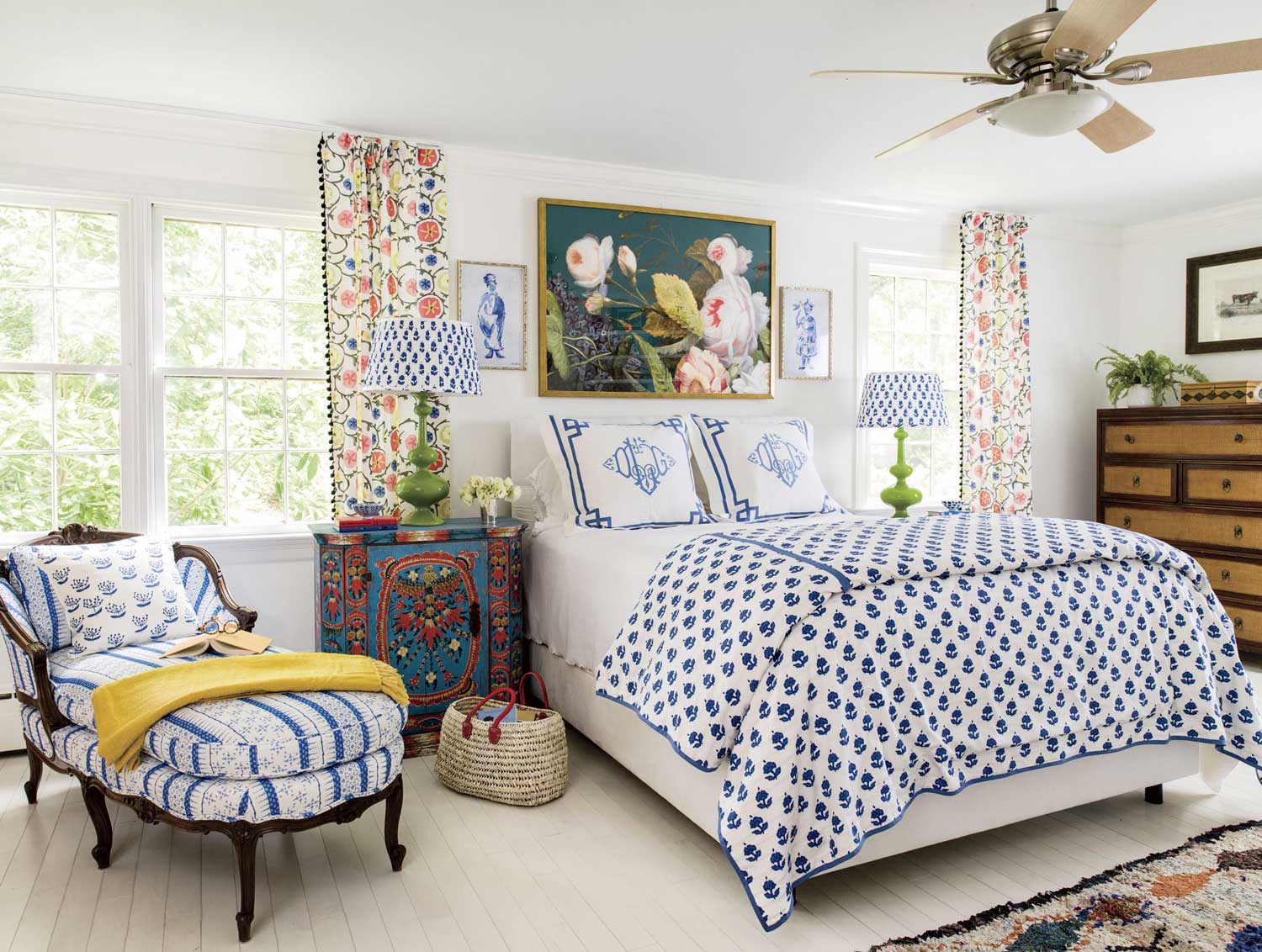

Image credit Helen Norman, styling by Lizzie Cox as featured in southernliving.com
Combine Themes
Picking a theme to keep it in mind as you add patterns will provide a framework to work within. As you build in confidence, you may wish to mix themes to add interest to your space and create something truly unique. Florals and stripes work together, as do coastal themes and busy jungle patterns. Geometrics tend to work well with everything and can be slotted in here and there to add different shapes and scales across your room.
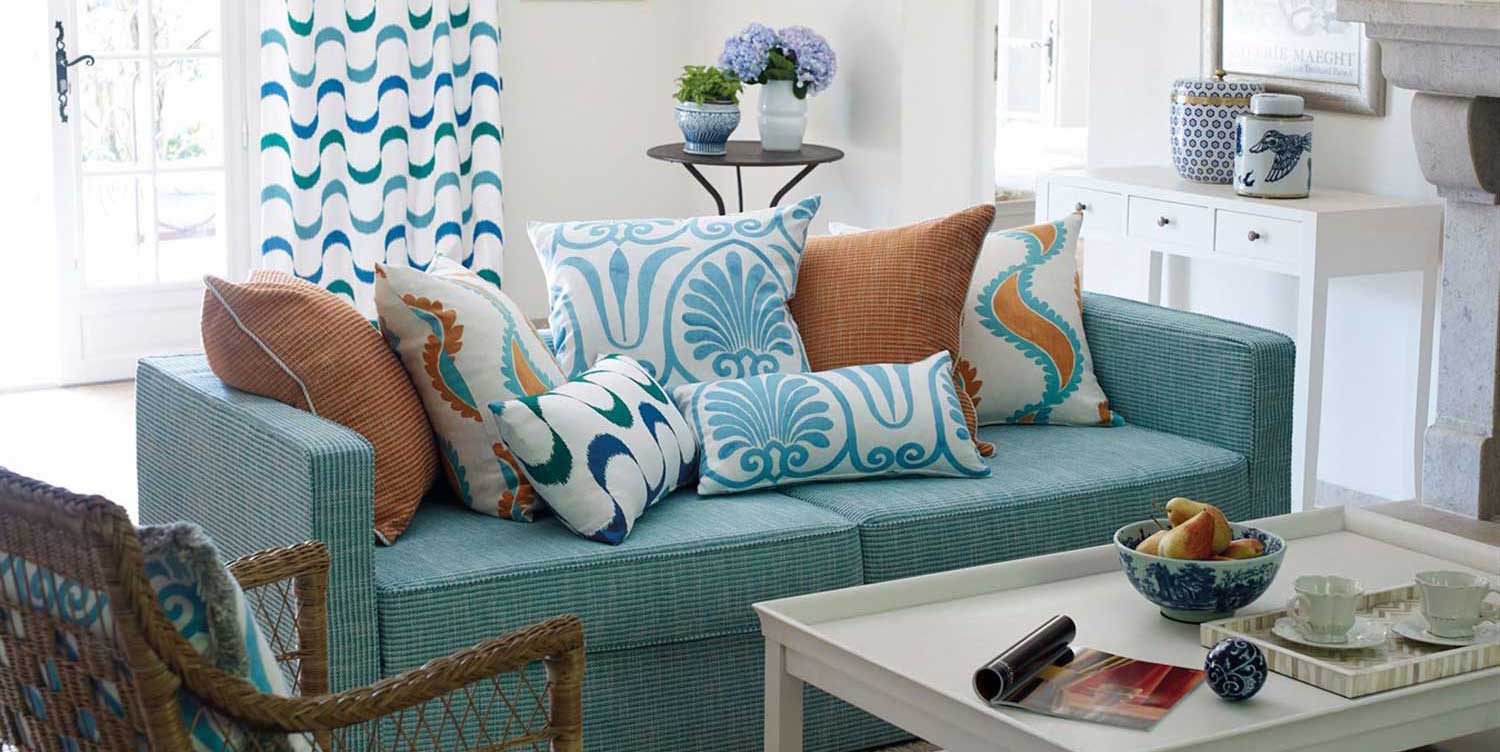

Patterns Don’t Always Equal Busyness
Adding pattern doesn’t automatically mean your space is going to be bright and overwhelming. By choosing more muted colourways and selecting soft lighting for your room, you can tone down patterns to create a cosy and comfortable vibe.
Be Brave
It can be tempting to play it safe but if you really want to embrace the look, then use colour and patterns to draw attention to items that often get overlooked such as headboards, lighting and bedspreads.
Mixing patterns is a voyage of discovery that will evolve over time, and taking risks is a big part of the journey. Staying open mind to new designs and being brave to experiment with un-obvious options is key to finding the patterns that work to get the look you desire.
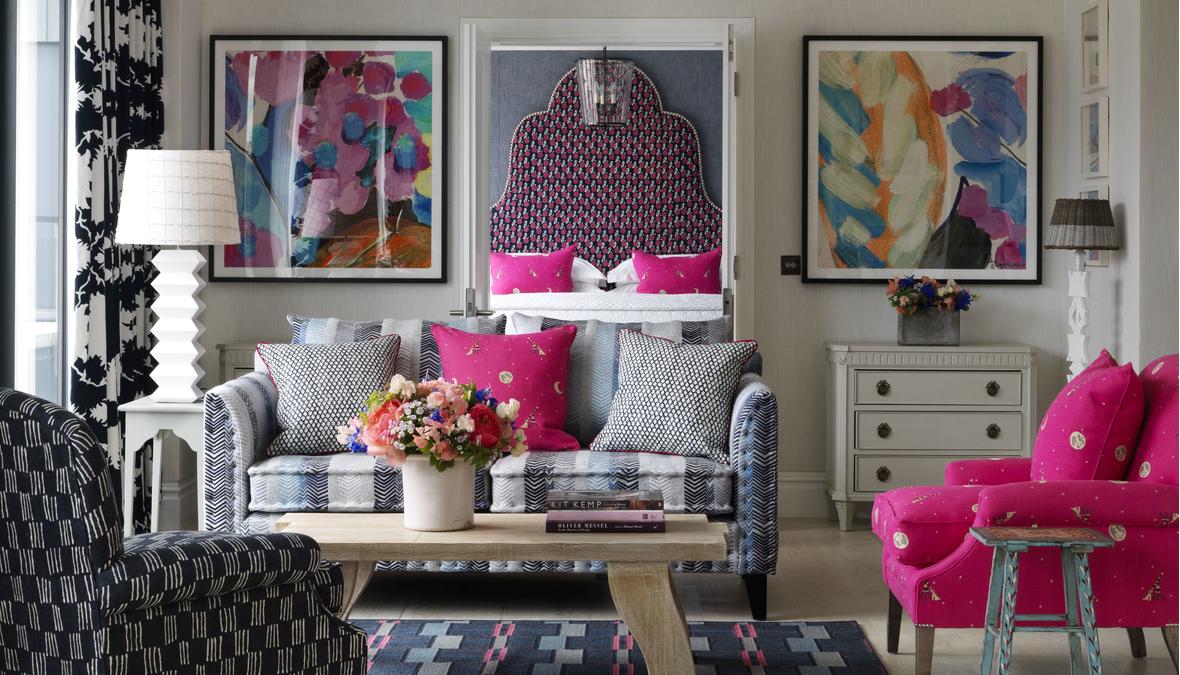

You May Also Enjoy Watching...
Ten Chic Roman Blind Ideas
Full of colour and pattern, this scheme featuring the beautiful Magnolia Fabric mixes pattern, texture and colour to create a room that is full of vibrancy and cheer.
How to Choose a Paint to Match Your Wallpaper
Join Emma as she shares her expert tips on choosing the perfect paint to match your favourite wallpaper when redecorating your home.
- paypal
- visa
- mastercard
- amex

